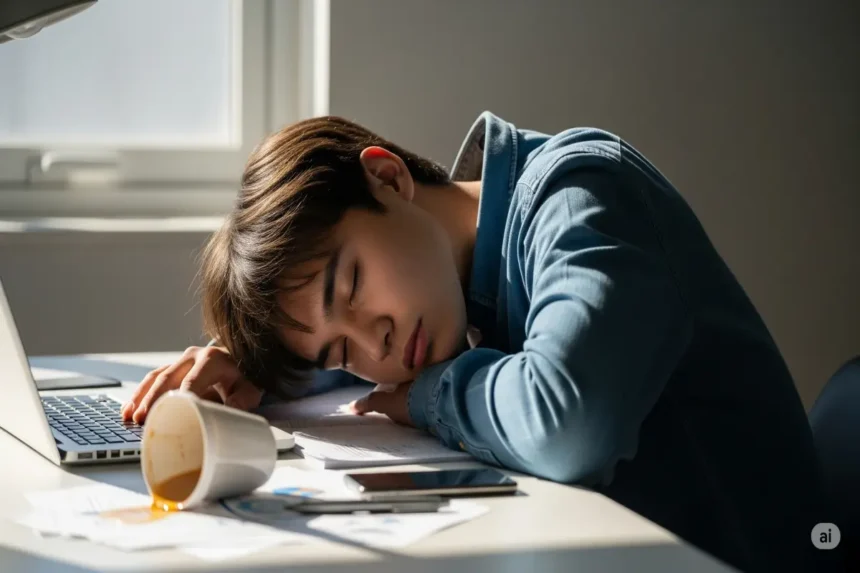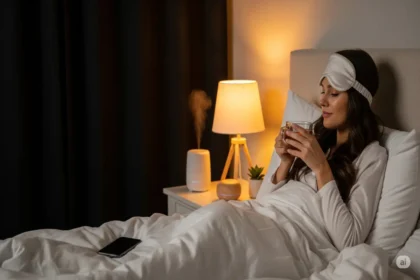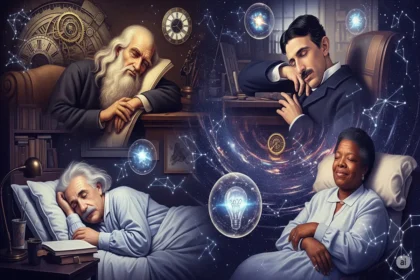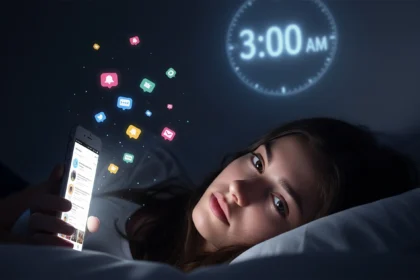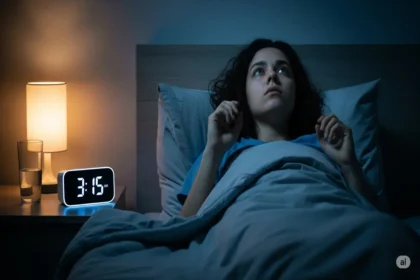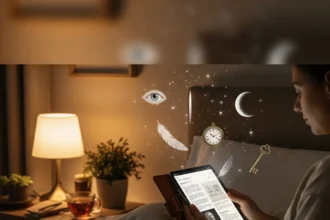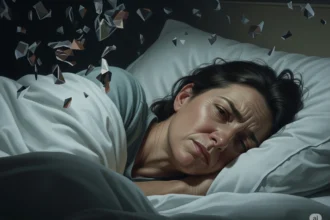Imagine living in a world where the line between wakefulness and sleep constantly blurs, where an overwhelming urge to sleep can strike at any moment, regardless of the situation. This is the daily reality for individuals living with Narcolepsy, a chronic neurological disorder characterized by overwhelming daytime sleepiness and sudden, irresistible sleep attacks. Far from merely feeling “tired,” narcolepsy is a profound disruption of the brain’s ability to regulate sleep-wake cycles, leading to a life lived on the precipice of slumber, often misunderstood and profoundly challenging.
Consider Alex, a bright and ambitious college student. He would be in the middle of a lecture, fully engaged, when suddenly, his eyelids would grow heavy, his head would nod, and despite his best efforts, he would drift off. Sometimes, a burst of laughter from a friend would cause his knees to buckle, or his jaw to go slack, making him drop whatever he was holding, even though he was fully conscious. These episodes, initially dismissed as extreme fatigue from late-night studying, began to isolate him, impacting his grades and social life. Alex’s struggle is a vivid illustration of narcolepsy’s insidious nature, a condition that can hijack ordinary moments and transform them into unpredictable battles against sleep.
The Brain’s Sleep Switch: What Goes Wrong in Narcolepsy?
To understand narcolepsy, we must first appreciate the intricate dance between wakefulness and sleep in a healthy brain. Our brains meticulously regulate these states, ensuring we are alert during the day and can transition smoothly into restorative sleep at night. This regulation is largely orchestrated by a small but crucial group of neurons in the hypothalamus that produce a neurotransmitter called hypocretin (also known as orexin). Hypocretin acts like a master switch, promoting wakefulness and helping to stabilize the transitions between sleep stages, particularly keeping REM sleep at bay during waking hours.
In most cases of narcolepsy, specifically Narcolepsy Type 1 (NT1), the immune system mistakenly attacks and destroys the hypocretin-producing neurons in the brain. This autoimmune attack leads to a severe deficiency of hypocretin, leaving the brain unable to properly regulate its sleep-wake cycles. Without enough hypocretin, the brain loses its ability to maintain stable wakefulness, leading to overwhelming daytime sleepiness, and also loses its control over REM sleep, allowing elements of REM (like muscle paralysis and dreaming) to intrude into wakefulness.
Narcolepsy Type 2 (NT2) involves similar symptoms of excessive daytime sleepiness but without the presence of cataplexy (sudden muscle weakness triggered by emotion) and often without a measurable deficiency of hypocretin. The exact cause of NT2 is less understood, but it’s believed to involve partial damage to the hypocretin system or other neurological mechanisms affecting sleep regulation.
The Hallmarks of Narcolepsy: Beyond Just Sleepiness
While overwhelming daytime sleepiness is the defining symptom, narcolepsy is a complex disorder characterized by a cluster of symptoms, often referred to as the “tetrad” (though not all patients experience all four):
1. Excessive Daytime Sleepiness (EDS): The Overwhelming Urge
This is the cardinal symptom and the most debilitating. Individuals with narcolepsy experience an irresistible urge to sleep throughout the day, regardless of how much sleep they got the night before. These “sleep attacks” can occur suddenly and without warning, even in engaging situations like conversations, while eating, or during work. The sleep is usually brief (a few minutes), but the urge to sleep quickly returns. This isn’t just feeling tired; it’s a profound, physiological need for sleep that the person cannot fight.
2. Cataplexy: The Emotional Collapse
Cataplexy is the most unique and often frightening symptom, primarily associated with Narcolepsy Type 1. It involves a sudden, brief loss of muscle tone (weakness or collapse) while the person remains fully conscious. These episodes are almost always triggered by strong emotions, particularly positive ones like laughter, excitement, surprise, or anger. During a cataplexy attack, the person might experience slurred speech, a drooping jaw, buckling knees, or even a complete collapse to the floor. The duration is usually seconds to a few minutes, and consciousness is preserved throughout. The scientific explanation is that the brain’s mechanism for REM sleep muscle paralysis (atonia) is inappropriately activated during wakefulness, triggered by emotional arousal.
3. Sleep Paralysis: Trapped Between Worlds
As discussed in other contexts, sleep paralysis is a temporary inability to move or speak that occurs when falling asleep or waking up. It’s a common symptom in narcolepsy, as the brain’s REM sleep atonia mechanism can persist or intrude into wakefulness. During these episodes, individuals are conscious but completely paralyzed, often accompanied by terrifying hallucinations.
4. Hypnagogic/Hypnopompic Hallucinations: Vivid Dream Intrusions
These are vivid, dream-like experiences that occur at sleep onset (hypnagogic) or upon waking (hypnopompic). For individuals with narcolepsy, these hallucinations are often more frequent, intense, and can be particularly frightening, blending seamlessly with reality. They are essentially elements of REM sleep dreaming intruding into wakefulness.
Other Associated Symptoms:
- Fragmented Nighttime Sleep: Paradoxically, despite overwhelming daytime sleepiness, nighttime sleep in narcolepsy is often restless, interrupted by frequent awakenings, vivid dreams, and sometimes even sleepwalking or REM sleep behavior disorder.
- Automatic Behavior: Performing routine tasks (like writing, driving, or talking) without conscious awareness, often with no memory of the activity later. This occurs during brief microsleeps.
The Journey to Diagnosis: A Long and Winding Road
Diagnosing narcolepsy can be a lengthy and frustrating process. Symptoms often begin in adolescence or young adulthood, but it can take years, even decades, to receive an accurate diagnosis. This delay is often due to:
- Misattribution: Symptoms are frequently mistaken for normal fatigue, depression, anxiety, or even laziness.
- Lack of Awareness: Many healthcare providers are not adequately trained to recognize the subtle nuances of narcolepsy.
- Variable Symptoms: The severity and combination of symptoms can vary greatly from person to person.
Diagnosis typically involves:
- Detailed Medical History and Sleep Diary: A thorough review of symptoms, family history, and a record of sleep patterns over 1-2 weeks.
- Polysomnography (PSG): An overnight sleep study in a lab to rule out other sleep disorders (like sleep apnea) and to observe nighttime sleep architecture.
- Multiple Sleep Latency Test (MSLT): This is the definitive diagnostic test for narcolepsy. It measures how quickly a person falls asleep during several scheduled naps (typically five naps, 2 hours apart) during the day. For narcolepsy, individuals fall asleep very quickly (mean sleep latency of 8 minutes or less) and enter REM sleep rapidly (within 15 minutes) in at least two of the five naps.
- Cerebrospinal Fluid (CSF) Hypocretin Levels: In some cases, especially to confirm Narcolepsy Type 1, a lumbar puncture (spinal tap) may be performed to measure hypocretin levels in the CSF. Very low levels confirm the diagnosis.
Living with Narcolepsy: Challenges and Management
Narcolepsy is a chronic condition, meaning there is no cure. However, it is manageable with proper treatment, allowing individuals to lead full and productive lives. Living with narcolepsy presents unique challenges:
- Safety Concerns: Sudden sleep attacks and cataplexy pose significant risks, especially when driving, operating machinery, or performing tasks that require constant vigilance.
- Social and Emotional Impact: The unpredictable nature of symptoms can lead to embarrassment, social isolation, and difficulties in school or work. Friends and family may not understand the severity of the condition, leading to frustration and feelings of being misunderstood.
- Mental Health: The chronic fatigue, social challenges, and impact on daily life can contribute to depression and anxiety.
Management strategies typically involve a combination of medication and lifestyle adjustments:
1. Medications: Targeting Symptoms
- Stimulants (e.g., Modafinil, Armodafinil, Methylphenidate, Amphetamines): These are the primary medications used to promote wakefulness and reduce excessive daytime sleepiness. They help keep the person alert during the day.
- Sodium Oxybate (Xyrem, Xywav): This unique medication is a central nervous system depressant taken at night. It improves nighttime sleep quality, which paradoxically leads to reduced daytime sleepiness and can also reduce cataplexy.
- Antidepressants (e.g., SSRIs, SNRIs, Tricyclics): Certain antidepressants can suppress REM sleep, which is effective in managing cataplexy, sleep paralysis, and hypnagogic hallucinations.
2. Lifestyle Adjustments: Supporting Management
- Scheduled Naps: Short, strategic naps (15-20 minutes) throughout the day can be incredibly effective in managing daytime sleepiness and improving alertness. These aren’t a sign of weakness but a vital part of the treatment plan.
- Consistent Sleep Schedule: Maintaining a regular bedtime and wake-up time, even on weekends, helps to stabilize the circadian rhythm.
- Sleep Hygiene: Optimizing the sleep environment (dark, quiet, cool) and avoiding stimulants (caffeine, nicotine) and alcohol, especially before bed.
- Regular Exercise: Moderate physical activity can improve nighttime sleep quality and reduce daytime sleepiness, but avoid intense exercise too close to bedtime.
- Dietary Considerations: Eating lighter meals, especially before bed, and avoiding large, carbohydrate-heavy meals during the day can help prevent post-meal drowsiness.
- Safety Planning: Individuals with narcolepsy should work with their doctor to develop safety plans, especially regarding driving or operating machinery. This might include pulling over for naps, using public transportation, or avoiding certain tasks during periods of high sleepiness.
- Support Groups and Education: Connecting with others who have narcolepsy can provide invaluable emotional support, practical tips, and a sense of community. Educating family, friends, and employers about the condition is also crucial for understanding and accommodation.
Research and Hope: The Future of Narcolepsy
Significant research is ongoing to better understand the causes of narcolepsy and develop new treatments. Scientists are exploring:
- Hypocretin Replacement Therapies: Developing ways to replace the missing hypocretin in the brain.
- Immunotherapies: Investigating treatments that could prevent or reverse the autoimmune attack on hypocretin neurons.
- Gene Therapy: Exploring potential long-term solutions through genetic interventions.
These advancements offer hope for more effective and targeted treatments in the future, potentially leading to a cure.
Conclusion: Embracing Life with Narcolepsy
Living with narcolepsy is a profound challenge, demanding resilience, adaptation, and a deep understanding of one’s own body. It’s a condition that forces individuals to navigate a world that isn’t designed for their unique sleep architecture, often leading to frustration, isolation, and a constant battle against an invisible force.
However, with accurate diagnosis, effective medical management, and a commitment to lifestyle adjustments, individuals with narcolepsy can lead fulfilling and meaningful lives. It’s about learning to work with their condition, rather than constantly fighting against it. It’s about advocating for themselves, educating those around them, and embracing strategies that allow them to maximize their wakefulness and manage their sleep attacks. The journey may be unpredictable, but with support and understanding, those living with narcolepsy can, and do, find ways to thrive, proving that even with uncontrollable sleepiness, life’s vibrant moments can still be fully embraced.
Disclaimer: The information provided in this article is for general informational purposes only and does not constitute medical advice. It is not a substitute for professional medical advice, diagnosis, or treatment. Always seek the advice of your physician or other qualified health provider with any questions you may have regarding a medical condition. Never disregard professional medical advice or delay in seeking it because of something you have read on this website.

